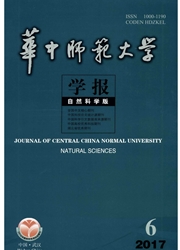

 中文摘要:
中文摘要:
该研究基于耐旱藓类连轴藓属5种53条在新疆的地理分布信息和7个气候变量,利用最大熵模型和ArcGIS 10.2软件,分别模拟现代气候和未来气候情景下连轴藓属在新疆的适生分布区,为探讨气候变化对干旱、半干旱区苔藓植物物种分布的影响提供参考。结果表明:(1)Maxent模型预测连轴藓属在新疆适生区的准确性非常高(AUC=0.957)。(2)年降雨量、最干季度降雨量和最暖季度平均气温是影响连轴藓属分布的主要气候因子。(3)连轴藓属在新疆的适生区主要集中在阿尔泰山和天山沿线,在未来(2061~2080年)气候情景下,连轴藓属分布面积将比现代气候下减少10.39%,其绝大部分现有南部适生区将丧失。
 英文摘要:
英文摘要:
Based on 53 occurrence records of five Schistidiurn species from Xinjiang, which is a desiccation- tolerant moss genus, and 7 bioclimatic variables, the present study employed both the maximum entropy (Maxent) model and the spatial analysis method in the ArcGIS 10.2 to predict the suitable distributions of Schistidiurn in Xinjiang under current and future climate scenarios, in order to provide basis for exploring the influence of climate change on bryophyte species distributions in arid and semiarid zones. The results indicated that. (1) the Maxent model gave a high accuracy (i. e. AUC=0. 957) in habitat predictions for Schistidiurn;(2) The annual precipitation, precipitation of driest quarter and mean temperature of war- mest quarter were the major climatic factors influencing the distribution of Schistidium in Xinjiang; (3) The suitable distribution of Schistidium in Xinjiang mainly located along Altai and Tianshan Mountains. Under the future (i. e. 2061--2080) climate scenarios, the range of Schistidium was predicted to decrease by 10.39% and most current habitats in south of Xinjiang would lost.
 同期刊论文项目
同期刊论文项目
 同项目期刊论文
同项目期刊论文
 期刊信息
期刊信息
